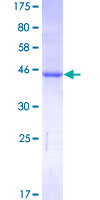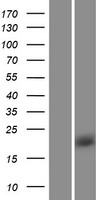order histories, retained contact details for faster checkout, review submissions, and special promotions.
Forgot password?
order histories, retained contact details for faster checkout, review submissions, and special promotions.
Locations
Orders Processing,
Shipping & Receiving,
Warehouse
2 Shaker Rd Suites
B001/B101
Shirley, MA 01464
Production Lab
Floor 6, Suite 620
20700 44th Avenue W
Lynnwood, WA 98036
Telephone Numbers
Tel: +1 (206) 374-1102
Fax: +1 (206) 577-4565
Contact Us
Additional Contact Details
order histories, retained contact details for faster checkout, review submissions, and special promotions.
Forgot password?
order histories, retained contact details for faster checkout, review submissions, and special promotions.
RHEB
Ras homolog enriched in brain
Rheb (Ras homolog enriched in brain) is an evolutionarily conserved member of the Ras family of small GTP-binding proteins originally found to be rapidly induced by synaptic activity in the hippocampus following seizure. While it is expressed at relatively high levels in the brain, Rheb is widely expressed in other tissues and may be induced by growth factor stimulation. Similar to other family members, Rheb triggers activation of the Raf-MEK-MAPK pathway. Biochemical and genetic studies demonstrate that Rheb has an important role in regulating the insulin/Target of rapamycin (TOR) signaling pathway. TOR is a serine/threonine protein kinase that acts as a sensor for ATP and amino acids, balancing the availability of nutrients with protein translation and cell growth. A dimeric protein complex termed TSC1/TSC2 indirectly inhibits TOR activity by inhibiting Rheb via the GAP activity of TSC2.
| Gene Name: | Ras homolog enriched in brain |
| Family/Subfamily: | Ras GTPase superfamily IPR001806 , not assigned-Ras GTPase superfamily IPR001806 |
| Synonyms: | RHEB, RHEB2, GTP-binding protein Rheb, Ras homolog enriched in brain |
| Target Sequences: | NM_005614 NP_005605.1 Q15382 |
Publications (1)



If you do not find the reagent or information you require, please contact Customer.Support@LSBio.com to inquire about additional products in development.










